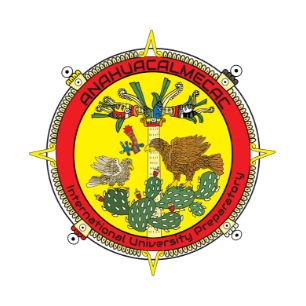This op-ed describes the power of learning in a culturally affirming environment.
BY SALMA PEREZ
FEBRUARY 27, 2023
I’m still in college, but I’m a part of a team of writers working on an upcoming Amazon series that is loosely based on my school experience — a learning environment that affirmed my identity as an Indigenous Zapoteca, Mixteca with family roots in Oaxaca, Mexico.
Every student should have this kind of affirming Indigenous-based education. Yet this is not happening in schools across the country. In my home state of California, where the Department of Education promotes curricula that reflect Native American culture, teachers have assigned homework on offensive Native American imagery, and one even made headlines for wearing a fake headdress.
In Florida, the State Board of Education, emboldened by Governor Ron DeSantis’s crusade against the teaching of inclusive, accurate US history, ruled that schools “may not define American history as something other than the creation of a new nation.” This ruling omits how this new nation was formed on stolen land.
Students must know the full history of how Indigenous communities resisted settler colonialism. Fifty years ago, on February 27, 1973, about 200 Oglala Lakota were joined by American Indian Movement (AIM) activists in Wounded Knee, South Dakota, on the Pine Ridge Reservation. They demanded that the US government fulfill treaties that were broken by land theft and genocide as well as the removal of a tribal chairman accused of corruption. The Wounded Knee Occupation, as it was called, ended 71 days later. Protesters surrendered on May 8 after federal troops killed two Indigenous activists.
This happened on the same land where US soldiers massacred nearly 300 Lakotas on December 29, 1890. I remember learning about the Wounded Knee Massacre in 11th grade, when my class read Bury My Heart at Wounded Knee: An Indian History of the American West, by Dee Brown. I vividly remember the book’s retelling of snow-covered blood and stories of the Lakotas singing ceremonial songs in defiance.

WATCH6 Misconceptions About Native American People
Because I attended the Anahuacalmecac International Preparatory of North America (AIUP), the only Indigenous, community-based K–12 school in Los Angeles County, I was taught Indigenous history in English class. Each week, my classmates and I answered discussion questions that helped us understand and process how the violence of genocide and assimilation is still perpetuated against Indigenous people today.
Since kindergarten, I was immersed in a culturally affirming environment where students learned ceremony protocols and showcased our traditional dances during school events. I learned Nahuatl, an Aztec language, as well as songs in Tongva, a language indigenous to where I live, the occupied Tongva territory also known as Los Angeles. My student experience at AIUP even prepared me to be a delegate at the United Nations Permanent Forum on Indigenous Issues at just 16 years old. My school gave me the skills to speak, advocate, and represent at the UN about Indigenous autonomy, sovereignty, and culture.

Students not attending a school like AIUP can receive a much different education. An analysis by NYU Metro Center found that elementary English Language Arts (ELA) curricula — Houghton Mifflin Harcourt Into Reading, McGraw Hill Wonders, and Savvas ReadyGEN and myView — have reading lists where Native American characters and authors are mostly absent. Among the hundreds of books across the four ELA curricula, there are only nine Native American main characters.
When Indigenous peoples, cultures, and identities are not properly represented in education, harmful narratives can emerge. NYU Metro Center found in their latest report that among the same curricula, Native American characters were presented with egregious hostility. For example, in “Pedro’s Journal: Story of Columbus” in Savvas myView, Native American characters were described as “docile,” and their physical features were called “unusual” — racist characterizations I never had to encounter because of my Indigenous-centered education.
Over 132 years after the Wounded Knee Massacre and 50 years after the Wounded Knee Occupation, many of this country’s elementary ELA textbooks still contain offensive stereotypes that dehumanize Native Americans. As young people, we have the power to create change. We can join student-led education justice groups like my organization Our Turn and show up to school board meetings to demand that public schools teach the fullness of Native American history and culture. All children deserve this education.
Source Article: https://www.teenvogue.com/story/indigenous-school-los-angeles
